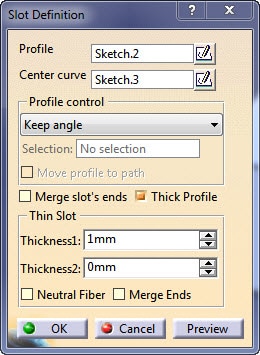Progressive slots – Online slots with progressive jackpots are called progressive slots, and these games have the potential to pay out life-changing wins. Only real money bets stand a chance to trigger a progressive jackpot. However, you can still enjoy these free online slots for fun. VR Slots: These are the newest is the online gaming. The past simple tense (also called the simple past tense, or simply the past simple) is used to express completed actions.It is known as the past simple because it does not require any auxiliary verbs to complete its meaning; its structure is simply the past-tense form of the verb. The Past Simple (Simple Past) with Other Verbs. We make the past simple just like the present simple except we use 'did' instead of 'do / does'. It's really easy because 'did' doesn't change, even with 'he / she / it'. The positive: We usually make the positive by adding '-ed' to the infinitive. For example, 'play' becomes 'played'.

Sloth, tree-dwelling mammal noted for its slowness of movement. All five living species are limited to the lowland tropical forests of South and Central America, where they can be found high in the forest canopy sunning, resting, or feeding on leaves. The original PC motherboard had a minimum of integrated devices, just ports for a keyboard and a cassette deck (for storage). Everything else, including a display adapter and floppy or hard disk controllers, were add-in components, connected via expansion slots. Over time, more devices were integrated into the motherboard. It was a slow trend initially.
The original PC motherboard had a minimum of integrated devices, just ports for a keyboard and a cassette deck (for storage). Everything else, including a display adapter and floppy or hard disk controllers, were add-in components, connected via expansion slots.
Over time, more devices were integrated into the motherboard. It was a slow trend initially though, as I/O ports and disk controllers were often mounted on expansion cards even up to 1995. Other components – typically graphics, networking, SCSI and sound – usually remained separate. Many manufacturers have experimented with different levels of integration, building in some or even all of these components. However, there are drawbacks. It’s harder to upgrade the specification if integrated components can’t be removed, and at first highly integrated motherboards often required non-standard cases. Furthermore, replacing a single faulty component may mean buying an entire new motherboard.
Consequently, those parts of the system whose specification changes fastest, particularly RAM and CPU, tend to remain in sockets or slots for easy replacement. Similarly, parts that not all users need, such as SCSI, are usually left out of the base specification to keep costs down. However, it’s now common for sound, video and/or network support to be included in motherboards, particularly as technology miniaturization has allowed greater space within the motherboard form factor and Flash BIOS and EPROM has allowed greater support for updated technologies.
The basic changes in motherboard form factors over the years are covered later in this section – the diagrams below provide a detailed look at the various components on two motherboards. The first is a Baby AT design, sporting the Socket 7 processor connector, circa 1995. The second is an ATX design, with a Pentium II vSlot 1 type processor connector, typical of motherboards on the market in late 1998.
Motherboard development consists largely of isolating performance-critical components from slower ones. As higher speed devices become available, they are linked by faster buses – and the lower-speed buses are relegated to supporting roles.There are cost benefits to putting peripherals designed as integrated chips directly onto the motherboard, but the biggest downside is the restriction of future upgrade options. However, the flexibility of the open IBM architecture, the basis of the modern PC motherboard allowing the attachment of peripherals and opening the door to the modern PC, allows for many options. Whether the PC buyer opts for low cost integration or high powered flexibility, this is the reason that PC motherboards are so widely varied and yet so integrally compatible with all PC software.

(Formation of the simple past of the verb ‘to be’)
Table of contents – past simple of ‘to be’
On this page you will find the following:
Formation of the simple past of ‘to be’
The simple past tense (sometimes simply called past) of to be is formed irregularly and has two different forms (was/were). In addition, the verb ‘to be’ can be utilised as a full verb as well as an auxiliary verb, in which case it forms part of the past continuous or the passive voice. Now, compare its occurrence as a full verb in the following examples and the table below:
The Past Form Of Show
- Exemplary use and formation of ‘to be’ in the past simple:
- “Although the flight was very expensive, we went on holiday.”
- “In the amusement park, there were a lot of things to do.”
- Watch out! In questions, ‘to be’ does not require ‘do’ or ‘did’ as an auxiliary (helping) verb:
- “Where were you yesterday?”
- Other verbs with auxiliary (then, ‘to do’ is needed in questions):
- “Where did you stay yesterday?”
Verb forms of ‘to be’ in the past simple

Demonstration of the verb ‘to be’ when used as a main verb, i.e., full verb:
Positive/affirmative sentences
| Person/pronoun | Positive | Interrogative form (question) |
| I/he/she/it | He was. | Was he? |
| we/you/they | They were. | Were they? |
Negative sentences
| Person/pronoun | Negative | Short form | Interrogative form | Short form of question |
| I/he/she/it | I wasnot. | I wasn’t. | Was I not? | Wasn’t I? |
| we/you/they | We werenot. | We weren’t. | Were we not? | Weren’t we? |
Further explanations related to the topic ‘Formation of ‘to be’ in past simple’
The Past Form Of Sit

The Past Form Of Sink
The following explanations relate to the topic ‘Conjugation and verb forms of the past simple of the verb ‘to be’’ and could be interesting too:
The Past Form Of Steal
- Exercise 1: past simple
- Exercise 1: past simple of ‘to be’